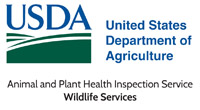United States Department of Agriculture: Animal and Plant Health Inspection Service

United States Department of Agriculture Wildlife Services: Staff Publications
Document Type
Article
Date of this Version
2018
Citation
N.W. van den Brink et al.
Abstract
Comprising over 1400 species worldwide, rodents are the largest taxonomic group of mammals (Nowak 1999). Rodent use of habitats is extensive and varied. Most rodent species are relatively small, secretive, prolific, adaptable, and have continuously growing incisors which require constant eroding by gnawing. Rodents are known for their high reproductive potential; however, there is much variability between species as to the age at first reproduction, size of litters, and the number of litters per year. All rodent species have ecological, scientific, social, and/or economic values. They recycle nutrients, aerate soils, distribute seeds and spores, and affect plant succession. Some provide meat and furs for people. Several species are used in large numbers in medical research. Additionally, they provide an important prey base for many species of predatory animals.


Comments
© Springer International Publishing AG 2018
This document is a U.S. government work and is not subject to copyright in the United States.
DOI 10.1007/978-3-319-64377-9_13